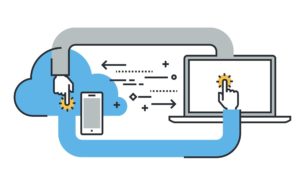Eduventures report analyzes different LMS providers to see how they meet institutions’ common criteria
 A new report from Eduventures analyzes learning management systems (LMS) and provides a “best fit” analysis based on higher education institutions’ requirements and operating environment.
A new report from Eduventures analyzes learning management systems (LMS) and provides a “best fit” analysis based on higher education institutions’ requirements and operating environment.
The 2016 report highlights new industry offerings and features that could help to speed LMS adoption among higher education institutions of all sizes.
Implementing a new LMS is a significant investment, both financially and in terms of human capital. College and university staff are often asked to choose vendors with limited information about their solutions or how they will integrate with existing student management and learning applications.
According to Eduventures, higher education institutions can use the report to help inform their LMS decision-making process, but shouldn’t use it to determine a single “best” LMS. NOr should the report shouldn’t replace a competitive RFP process.
“Institutions should use the findings in this report to inform a comprehensive vendor selection process, not to identify the single ‘best’ LMS. Rather, it presents a well rounded understanding of the strengths and weaknesses of each major LMS as measured against a specific set of criteria,” said report author Jeff Alderson, Principal Analyst at Eduventures.
The LMS market has stabilized over the past two years, and market research indicates Moodle is the largest vendor in more countries than any other provider, due in part to its cost and extensibility.
Next page: Important LMS evaluation criteria
But in North America and the U.S. specifically, Blackboard has a dominant market share, holding 34.22 percent of the North American market, with Moodle next at 22.98 percent, Brightspace at 10.58 percent, and Canvas at 9.29 percent.
The study reveals that featured such as social collaboration, calendar functions, navigation, the presentation of content across device types, and sharing learning objects or content instantly are all among LMS users’ top concerns.
As more vendors adopt a common set of technologies, institutions can no longer base their purchasing decisions solely on the tools or devices an LMS supports.
To help institutions navigate a more sophisticated evaluation process, Eduventures defined evaluation criteria to compare technology providers based on their likelihood of reducing the institution’s total cost of ownership while maximizing the potential impact on teaching and learning. The evaluation presented in the report apply broadly to most institutional scenarios. Just as all institutions are unique, some vendors will be a better fit for an institution than others.
The six defined criteria are:
1. Plays well with the ERP/SIS
2. Scales seamlessly to meet demand
3. Percent coverage of required use cases
4. Clients’ ability to drive product roadmap
5. Integrtes with (nearly) everything
6. Training and support options
Eduventures reviewed more than 20 LMS solutions and found that nearly all responding vendors offer “comprehensive capabilities that we consider standard requirements for any holistic LMS.” Those capabilities deemed essential include core tools for teaching, learning and collaboration, content consumption, basic grading assessments, and administrative configuration and reporting tools.
Based on evaluation criteria, Eduventures chose seven LMS platforms that offer the widest range of functionality and the most compelling, innovative approaches to teaching and learning, and those seven are featured in-depth in the report. They are:
1. Blackboard Learn (Blackboard)
2. Brightspace (D2L)
3. Canvas (Instructure)
4. iTunes U (Apple)
5. Moodle
6. Sakai
7. Schoology
Those seven LMS platforms were put into a comparison matrix to analyze how each LMS aligns to the six evaluation criteria. Visit Eduventures.com for more information on the report and to see how the seven LMS platforms stack up in the matrix.
- Students say study abroad opportunities boost employability skills - May 10, 2024
- An overwhelming majority of organizations paid ransomware last year - May 9, 2024
- 5 trends impacting higher ed’s path in 2024 - May 8, 2024

